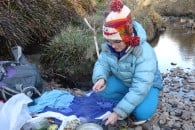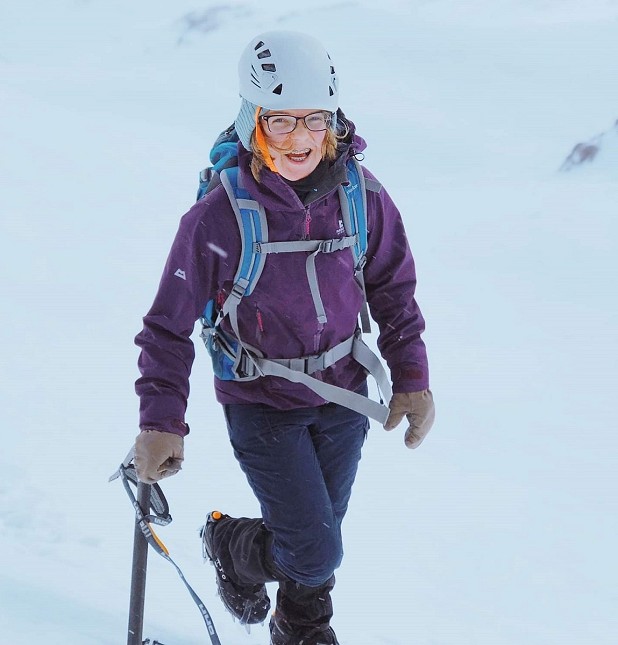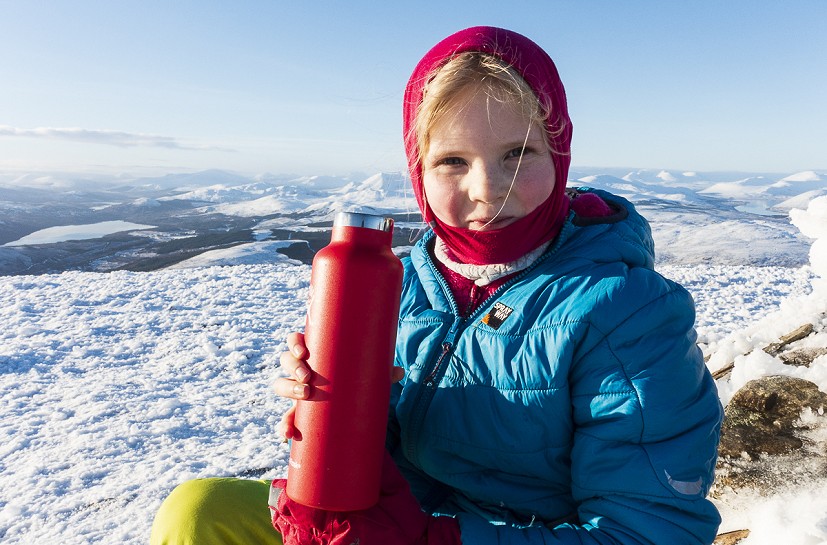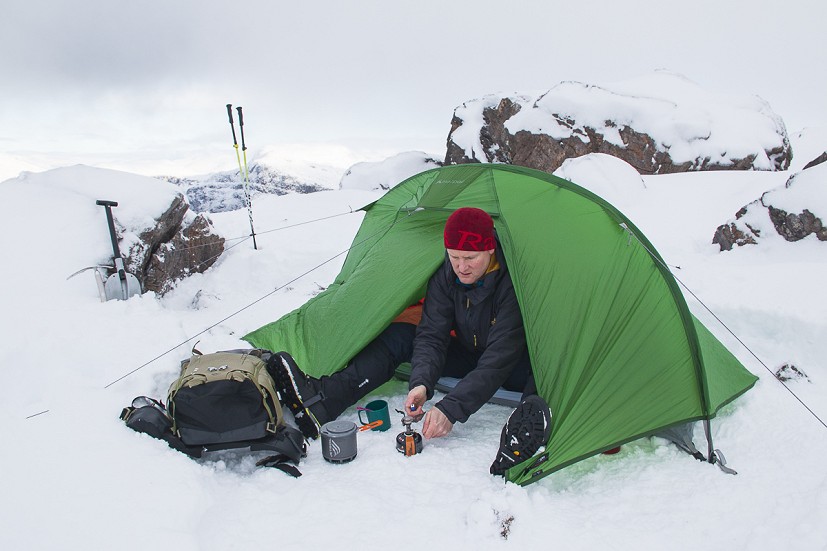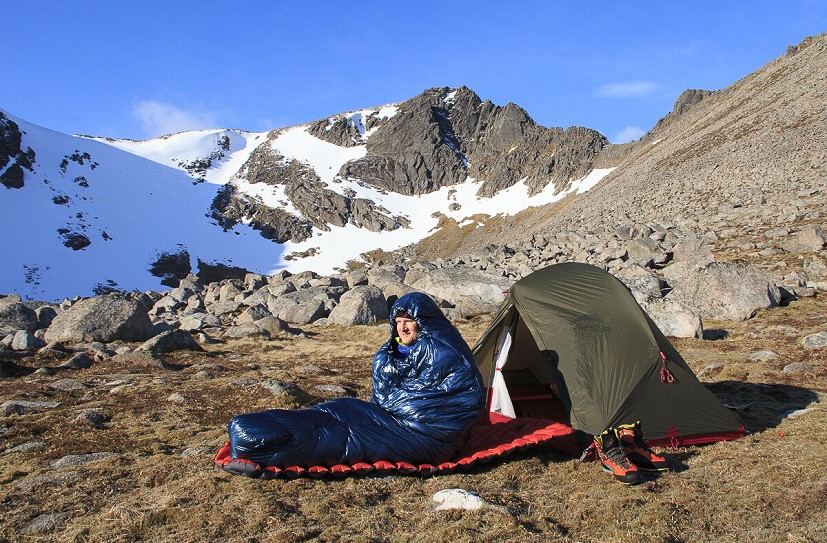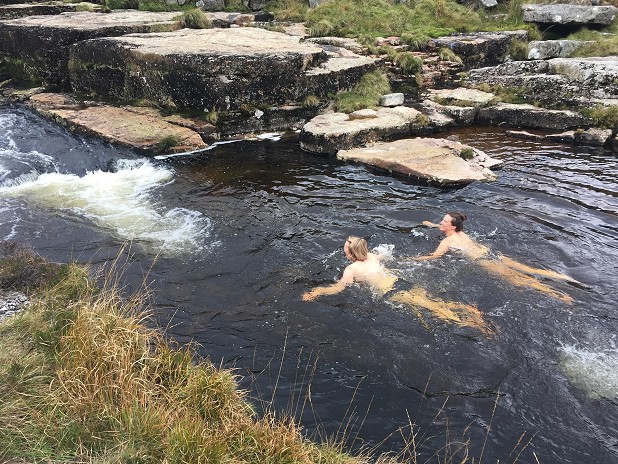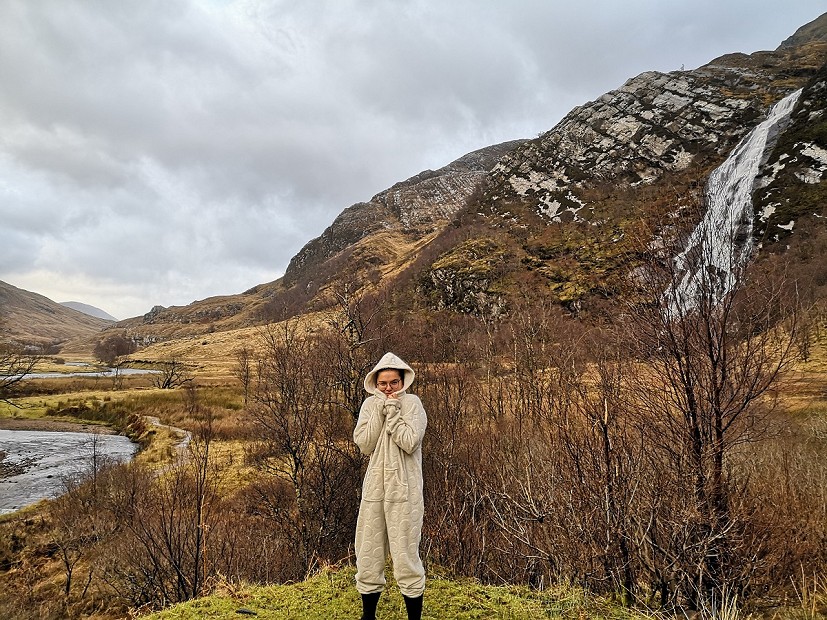12 Tips and Tricks to Stay Warm Outdoors in Winter
Whether you're winter climbing, walking, or indulging in the ultimate masochism of a sub-zero camp, having all the right gear is only half the battle. From cuddling a hot bottle of juice all night, to changing your baselayer on a windy hillside, here are some handy hints for winter comfort, from the naturally cold-blooded Fliss Freeborn.
Sometimes, just sometimes, it's a bad idea to go up into the hills in winter. When you can't see the end of your own nose, for example, or when your teeth are being rattled about in their sockets by gale-force winds. On these days, you're best off sitting wistfully by a roaring log fire, because even your own weight in Gore-Tex or Primaloft won't make the meteorological carnage outside any better.
On other days, however, the ragged and wild beast of winter undergoes a personality transplant induced by a rare burst of high pressure. The wind drops to a whisper, the sun emerges, and ground sparkles beneath your feet. Those bluebird conditions mean the views stretch as far as the eye can see during the day; stay out past sunset and you'll often find that the bright moonlight dispenses with the need for headtorches. If you're lucky enough to have snow lying, camping in a sheltered glen with only the stags and the stars for company can be an otherworldly experience.
Of course, the importance of good kit, even in these breathtakingly still conditions, cannot be overstated. Anyone who's ever spent a miserable belay or a long cold night shivering their nipples off due to inadequate insulation knows this. But even if you're well prepared with a good beefy synthetic jacket, and enough merino to make a Spanish sheep sick, there are still things you can do to make being outside in winter more comfortable that go beyond the basics of having the right stuff.
Here are 12 useful tips and tricks I've learned from being a naturally cold person in minus conditions:
Change your baselayer if you're stopping after hard exercise
Although my above log recently made it to @BestofUKC on Instagram, I did learn one useful thing in my short and unenjoyable career in winter climbing: change your damp, sweaty baselayer before the first belay. The same advice applies if you're stopping at all in winter after some vigorous, sweaty exercise - whether that be for the night, or for an extended lunch break where you know you'll be stopped for a while. Bear the cold for a minute, slip into a dry baselayer, then pop everything else back on. This will make things immeasurably warmer because your home-grown moisture is no longer wicking away precious heat, the source of which diminishes when you stop.
Make sure your waterproof is breathable. If it's not precipitating, go without
Although warmth is very important in winter, moisture management is just as crucial to staying comfortable. For the same reasons as above, make sure your waterproof and windproof layer is breathable. There's no point having a slick layering system if you're essentially shrink wrapping yourself at the final stage, so get rid of the crisp-packet and find yourself a shell made of something decent like Gore-Tex*. And if the sky is mercifully un-wet or if it's especially un-windy, you'll be fine with your top layer stowed in your bag rather than on you, collecting needless moisture to chill you down later.
*other brands are available
Put hot water in your bottle before you go out so it doesn't freeze
If you're out and about in the minuses, then your water freezing solid can become a very real, very undrinkable problem. Some rectify this by having insulated water bottle holders, but I simply fill my Nalgene* with hot water so that by the time I'm wanting a big sip an hour or so in, it'll have cooled to a normal, drinkable temperature. If it's still warmer than the surrounding air, then that's a bonus. Taking a flask of hot squash or tea for the really cold days is also a winner, but quenching your thirst in an instant with something temperate and chuggable is often the bigger priority. If you're not pushed for space, you might carry both.
*other brands are available
Boil more water for the bottle before you go to bed
One of my favorite winter camping tricks is to bring along a couple of those individual steamed chocolate or sticky toffee puddings you can buy from any supermarket. They come in little plastic tubs and you simply boil them to heat them through. Now, this is where you can kill three birds with one stove: you've got some hot pudding (win), you've got some spare boiling water for a hydrating, warming cup of herbal tea before bed (win), and you've also got enough water to fill a bottle to use as a hot water bottle (big win). My only advice here is to bring two puddings because your camping buddy will be incredibly jealous if you only rock up with one.
Don't scrimp on spare socks
I have never regretted bringing extra socks when out over night. As well as having one fresh pair per day, always have a spare pair with you for the sleeping bag. Designate them as tent-socks only so you know you'll have something dry to pop on when you go to bed. My other trick if I'm only out for a day is to bring an extra pair of fluffy socks and put them in the glovebox of my car so I can drive home without my toes turning into flesh flavoured ice pops.
The same goes for hats, gloves and buffs. Have a spare of each (or several pairs, when it comes to gloves).
Tie the end of your sleeping bag with a spare bootlace if you have too much space
I am a 5'2", petite woman. My sleeping bag is designed for a burly 6ft bloke. No, I can't afford to buy a different one, and it's fine anyway, because I tie the bottom end with a shoelace to reduce the amount of space I have to heat. I take up the extra room in the shoulders by stuffing fleeces, socks and gloves all around me, which has the added advantage of keeping them warm for the morning.
Take a fleece liner for the sleeping bag
Having a sleeping bag liner increases the warmth and longevity of your bag hugely, but then of course you knew that. If you're not pushed for space or weight, consider a heftier microfibre fleece liner to ensure you get a toasty night's sleep. I have been known to take a thin summer sleeping bag and put it inside my winter bag on very cold nights. Yes, I know that's mad, but it increases the comfort temperature by a good 10 degrees, and I'm so here for that.
Sleep with your contact lenses in your pockets
I've learned this from bitter experience. Even if they're not frozen solid (the salinity makes it very rare that you'll wake up with ice-cubes instead of vision), inserting freezing cold contact lenses can be an unpleasant experience. Sleep with them in your pockets to keep them pleasantly temperate.
If you're car camping, a rug/blanket on the floor of the tent can make things a lot more comfortable
Just having something like a picnic blanket or a throw to put down under your sleeping mats can make a night winter camping feel a lot more comfortable. The extra layer can make a real difference if your sleeping mat isn't quite as insulating as you'd like. And, if you've got a lazy morning in the tent waiting for the weather to clear, you can rest your feet on the floor without the warmth being immediately sucked out of them by the clammy plastic groundsheet.
Wild swimming is great, but really think about it if you're staying outside overnight too
I've made the unfortunate mistake of going wild swimming before hopping into a tent for the night, and not being able to get properly warm for the following 24 hours. It's not fun. If you know you can warm up in a bothy with a fire, or back safe and warm at home, then fine. But really, do think twice if you're relying on your own body heat to heat up a few kilos of down for the next few hours.
If you know you're prone to being cold, take a large fleece onesie and wear it on top of your clothes when car camping
It's madness. I know. But I do it and I love it.
Pay attention to your bum
Many people focus on their core being warm first, but if you're like me - meatier round the thighs and bum than the abdomen - don't forget about keeping your lower half toasty too. For example, if I'm ever chilly up the hill, I'll put my salopettes on before my belay jacket, which often warms me up much faster than another layer on top. Additionally, I always notice a huge difference in my overall temperature when I switch to insulated trousers over a thin pair of leggings. When your bum is an extremity, treat it as such!
